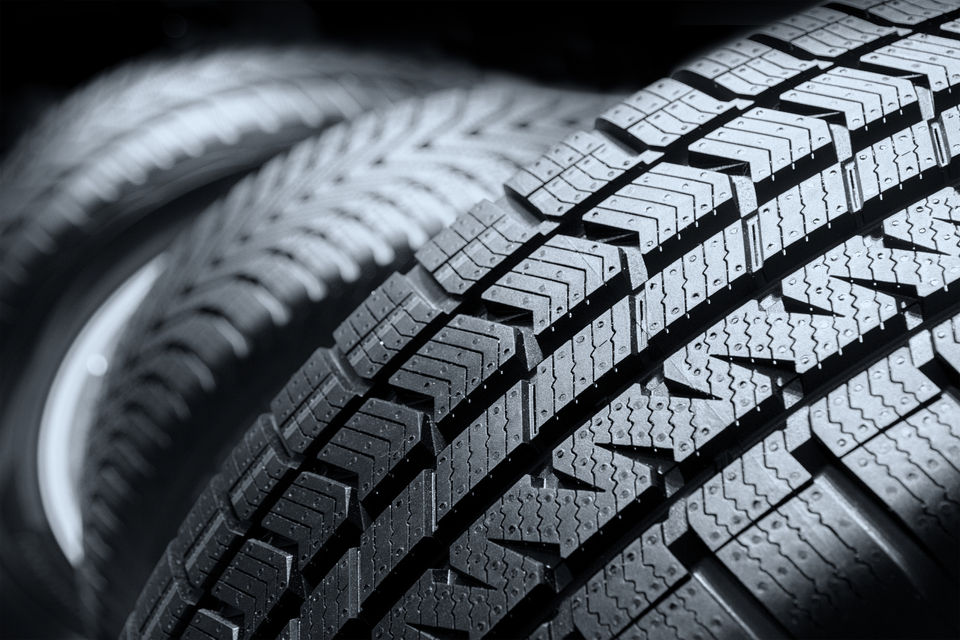
Tyre Tread Patterns - What Are The Different Types?
Is there a meaning behind the patterns on your tyres?
Whether it’s the balanced asymmetrical patterns, the versatile symmetrical patterns, or the high-performance directional patterns, each type offers unique advantages.
Read on as we explore their features as well as their pros and cons.
Types Of Tyre Tread Patterns
Asymmetrical
Asymmetrical tread patterns feature different designs on the inner and outer halves of the tyre. These patterns are engineered to offer a blend of performance characteristics.
The outer part usually has larger tread blocks, enhancing cornering grip and stability, while the inner section has smaller blocks for better water dispersal and traction on wet surfaces.
Pros:
- Enhanced cornering stability
- Improved wet traction
- Reduced road noise
Cons:
- Limited off-road capabilities
- May wear unevenly if not rotated regularly
Asymmetrical tread patterns are popular in high-performance and sporty vehicles, providing excellent handling and responsiveness. They are well-suited for both dry and wet conditions, making them versatile for everyday driving.
Symmetrical
Symmetrical tread patterns have uniform designs across the entire surface of the tyre. These patterns are known for their simplicity and balanced performance.
The continuous grooves and identical tread blocks provide consistent traction, making them suitable for all-season use.
Pros:
- Balanced performance in wet and dry conditions
- Reduced road noise
- Comfortable ride quality
Cons:
- Less effective in extreme weather conditions
- Limited off-road capability
Symmetrical tread patterns are commonly found in standard passenger cars and SUVs. While they may not offer the extreme performance of asymmetrical or directional patterns, they provide a good compromise for daily driving needs.
Directional
Directional tread patterns have V-shaped or arrow-like grooves that point in a specific direction. These patterns are designed to optimise water evacuation, making them highly effective in wet conditions by reducing the risk of hydroplaning.
Pros:
- Excellent water dispersal for improved wet grip
- Enhanced handling and stability at high speeds
- Sporty appearance
Cons:
- Less effective in snowy or icy conditions
- Unidirectional rotation, limits tyre rotation options
Directional tread patterns are often used in high-performance tyres and are particularly popular in regions with heavy rainfall. They excel at wet traction and provide a stable ride at higher speeds.
Can I Mix Different Types Of Tread Patterns On My Car?
It is generally not recommended to mix different types of tyre tread patterns.
Tyres work best when all four are of the same type, ensuring uniform performance and handling characteristics.
Mixing patterns can lead to uneven wear, reduced traction, and compromised safety. Therefore, it is best to stick to a single type of tyre for your vehicle.
Choosing The Right Tyre Tread Pattern
Road Conditions
Evaluate the typical weather and road conditions you encounter.
If you live in an area with frequent rainfall, consider tyres with excellent water dispersal capabilities, like asymmetrical or directional tread patterns.
For mostly dry conditions, symmetrical treads may suffice.
Driving Style
If you’re a performance-oriented driver who enjoys spirited driving, asymmetrical treads with better cornering grip are suitable.
On the other hand, if you prioritise comfort and a quiet ride, symmetrical treads might be more appropriate.
Vehicle Type
The type of vehicle you drive influences the tyre tread pattern you need.
Sports cars and high-performance vehicles benefit from asymmetrical patterns, while standard passenger cars and SUVs are well-suited to asymmetrical treads.
Conclusion
When choosing a tyre tread pattern, consider the weather conditions you frequently encounter and the type of driving you do.
Remember to stick to one type of pattern on all four tyres for consistent performance and safety.

Louis
I'm Louis, an engineer passionate about helping Australians choose better tyres for their vehicles!
